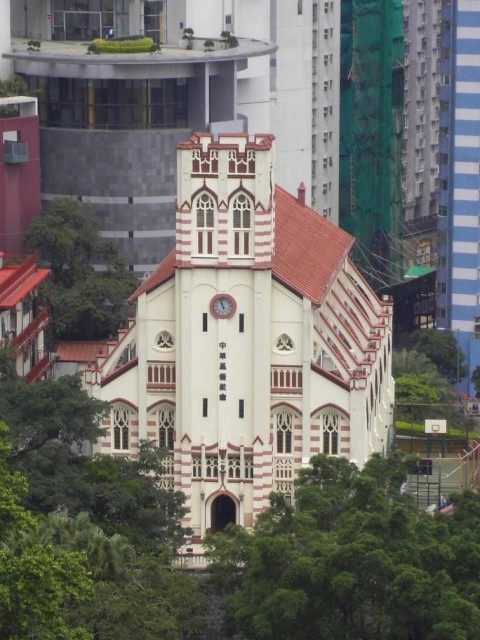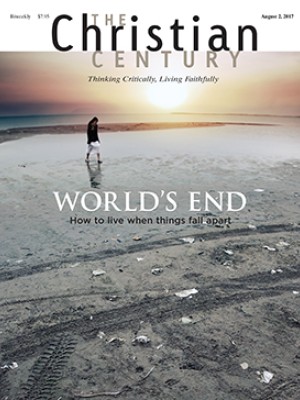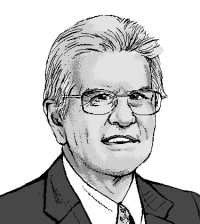The church's history—and future—in the world's largest megacity
In the Pearl River Delta, Christianity is more than just a memory.

The picturesque-sounding Pearl River Delta is at the heart of the global economy. It is part of Guangdong province, which for centuries was the most outward-looking and globally minded part of China. The Portuguese had a trading colony here at Macau, and in the 19th century the Thirteen Factories of the city of Guangzhou (Canton) were among the few trading centers open to Western merchants. Following the Opium Wars of the 1840s, the British developed their own thriving colony of Hong Kong.
The astonishing modern economic story begins in 1980, when the Chinese government created a Special Economic Zone in the delta city of Shenzhen. The city of Guangzhou achieved the same status shortly afterward. This opening to free enterprise and globalization detonated the explosive growth of modern China. Today, the nine metropolitan areas of the PRD constitute the world’s largest megacity, with 65 million people and 40 million more in the wider region. (Because of their special administrative status, closely connected Hong Kong and Macau are considered separately.) The region generates a quarter of Chinese exports, and its fast-growing regional GDP presently exceeds $1.2 trillion. The “Silicon Delta” is central to Chinese innovation and dynamism.
Read our latest issue or browse back issues.
The delta is also significant from the point of view of Christian history. A polymath scholar could write a wonderful history of East Asian Christianity since the 16th century by centering on the three core cities of Macau, Guangzhou, and Hong Kong.
Macau was the base for Jesuit activities throughout East and Southeast Asia. The legendary St. Francis Xavier died on Shangchuan Island in Western Guangdong, and his relics are venerated in nearby Macau. In 1594, the order created the influential St. Paul’s University College at Macau. When the story of Catholic missions in China, Japan, or Vietnam is told, it is generally based on reports and correspondence sent to or via Macau.
At the end of the 18th century, Protestant missions entered China through this region. Guangzhou became the home of Christian schools, hospitals, clinics, and printing presses. The city exercised a special appeal for American missionaries and missionary doctors.
Hong Kong was a hub of native Chinese Protestantism. For better or worse, the Western Christians of Guangzhou and Hong Kong led the modernization of 19th-century China and inspired native reformers and radicals. It was in Hong Kong that an American Congregational minister baptized the great revolutionary leader Sun Yat-sen. Missionaries in those cities shaped China’s modern medical history.
Christian ideas spread outside the key cities and into the countryside. The apocalyptic mystic Hong Xiuquan came from rural Guangdong, and he encountered American Christian preaching and tracts in Guangzhou in the 1830s. Hong later earned notoriety as the leader of the Taiping movement that came close to overthrowing the Chinese empire, in a revolutionary crisis that left millions dead.
In different ways, the Pearl River region stands on deep Christian foundations. Those origins are evident in Hong Kong and Macau, where sizable Christian minorities still flourish—Hong Kong has some 870,000 believers, 12 percent of the population. Christian churches and institutions abound in both territories. The rest of the delta region had been under direct communist rule since 1949, and the fate of Christians there was not nearly as favorable as in the old colonial possessions. Even so, plenty of ghosts persist in the form of impressive old church buildings, like Guangzhou’s Sacred Heart Cathedral, a Gothic delight.
Christianity in the Pearl River Delta is far more than just a historical memory. It is in growing cities like Shenzhen and Guangzhou that the faith exercises its greatest appeal, at all levels of society. Elites and professionals are drawn to Christianity for its association with modernity and its dedication to human rights. In a world of mass migration and shifting values, ordinary people turn to the churches for community, fellowship, and a sense of continuity. Whatever the reasons, churches of all kinds are again rising across the region, including an upsurge of popular house churches. The enormous new facilities of Shenzhen Christ Church and Tianhe Church in Guangzhou represent megachurches of a kind now familiar around the Pacific Rim. Pearl River Delta Christianity seems set for an era of mighty growth.
A version of this article appears in the August 2 print edition under the title “Pearl River Delta Christians.”






